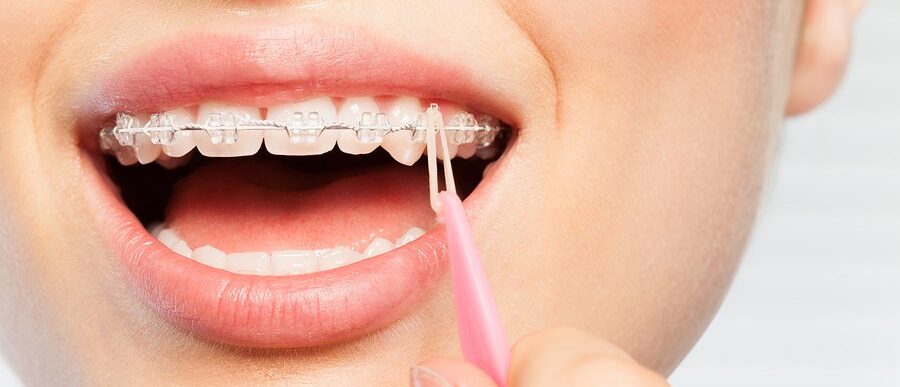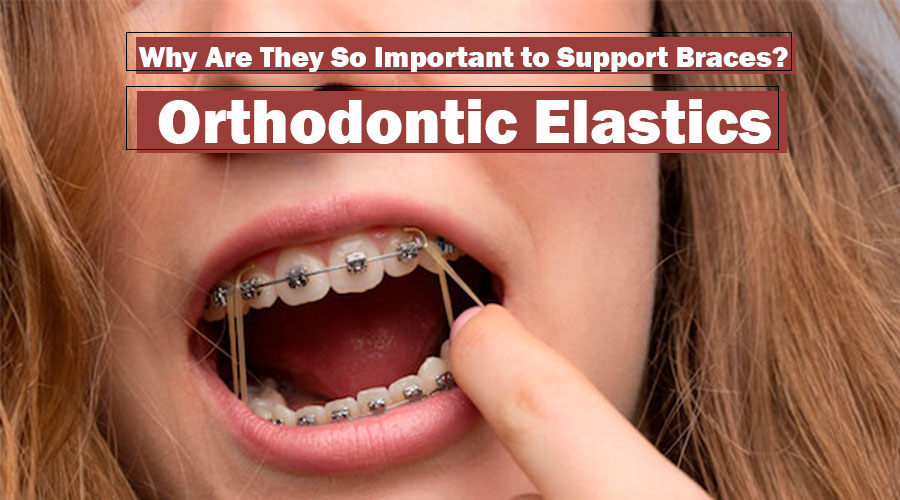How Do Orthodontic Elastics Provide Support For My Braces?
Everyone knows about braces, but very few take the time to get to know them. Trustworthy sidekick, rubber bands, or orthodontic elastics (as dentists refer to.) When people use orthodontic elastics, they do not really notice the rubber bands’ exact functions and importance.
Following the dental surgeon’s instructions when using rubber bands is crucial for the braces’ overall performance. Orthodontic elastics’ fundamental task is to align the teeth’s current position. These rubber bands may seem relatively insignificant at first glance but are very important for the overall orthodontic treatment.
Their role in the overall process is to straighten the teeth’ to ensure that they move in the ideal direction and finalize in the proper position. But some patients may not require orthodontic elastics. The dentist may recommend wearing them for a short period, depending on the patient’s current state. But in case of not following the dentist’s specific directions, the patient may have to wear rubber bands for more extended periods or utilize other methods.
There are numerous types of elastics. Some are bigger than others and provide different functions from each other. Some elastics may be longer than others to align or straighten the patient’s bite or jaw’s current position. Orthodontic rubber bands are quite efficient because they align the upper and lower jaw structure and teeth.
Your dental surgeon may advise you to take extra care of your braces as these elastics are removable but must be on top of the designated tooth. Additionally, dental elastics come in different colors to add an extra touch to your smile. However, wearing braces and elastics together can take a bit of time to feel comfortable.
Adjusting to this change can present a bit of a challenge for some, but the patient will undoubtedly feel comfortable using orthodontic elastics. Remember that each part of wearing braces is vital to obtain the patient and dental surgeon’s results.
What Do Orthodontic Elastic Bands Do?

Dental elastics are minuscule rubber bands that play two roles in the orthodontic process, but each rubber band can display different results. The dental surgeon will explain to the patient why they would require a particular rubber band. The following orthodontic elastics work differently:
Anterior triangle elastic: Normally, dentists place the anterior triangle rubber bands over the braces on top of the upper and lower canines and the first premolars creating a triangle shape over the teeth. This will move the bottom teeth forward and the upper teeth backward; some would expect this procedure to work the other way around, but the results are outstanding.
Class two elastic: When a dental surgeon wants to correct a patient’s overbite, the class two rubber bands will do the job. These elastics regulate the upper and lower teeth straight forward.
Class three elastic: The dental surgeon will only utilize the class three type rubber bands to support the patient’s underbite. This will allow the lower teeth to move back and the upper bite to move forward.
Interarch elastic: These rubber bands are much longer than the other ones, as these fix any misaligned teeth to correct the entire bite. Other beneficial aspects of utilizing these dental elastics are closing gaps between teeth or correctly fitting teeth together.
How Often Should You Change Your Orthodontic Elastics?

It would be best if you try to replace your orthodontic elastics every day, and remember to place the rubber band over the bracket your dentist told you to, intending to avoid any mishaps. Braces or brackets have a small round hook that allows the orthodontic elastics to hold on tightly. The pressure that dental elastics apply over the patient’s jaw is also a positive sign of advancements because the jaw alignment and the teeth interconnect to function accordingly.
The following tips of proper care for orthodontic elastics are quite helpful when the patient may feel uncomfortable while wearing them or adjustments the patient can make while using rubber bands and what changes the patient should expect after properly wearing them.
- The patient must wear their orthodontic elastics throughout their day and night or, as the dentist may advise them to make use of it. But the only exceptions are when the patient needs to eat or brushes their teeth to function correctly. Not wearing them correctly will only delay the process of orthodontic treatment.
- The patient should replace the Orthodontic elastics at least twice a day, as they wear down with usage. Many dental surgeons recommend replacing the rubber bands three to four times a day to provide advancements and results. In some cases, the dentist may recommend wearing two rubber bands simultaneously to work faster. It is quite common if the patient experiences a bit of aching around their teeth or jaw.
The patient must keep their orthodontic elastics in a dry but safe place. Most dental elastics come in small bags to conveniently store them in your pocket or anywhere else. - Orthodontic elastics are made out of natural latex, providing extra support while wearing them. It would be best if you did not use other rubber bands as traditional rubber bands you would use to tie your hair or place around your wrist are not adequate for this function.
Remember that orthodontic elastics are removable but must be placed back into place by the patient. Always remove your elastics while eating since these can represent a choking hazard if not removed. You should remove the elastics while brushing and flossing as these can snap and harm the patient. Try asking your dentist if you still feel doubtful about using elastics.
Elastics also come in numerous colors, just like your braces, so that you can stylize your smile to your personal preference; taking advantage of these elastics will help you throughout your dental journey. Still, you will thank your dental surgeon afterward as the results are quite visible. We all deserve to feel comfortable when we smile, follow your orthodontist’s instructions, and you’ll have straight teeth in no time.



Leave a Reply